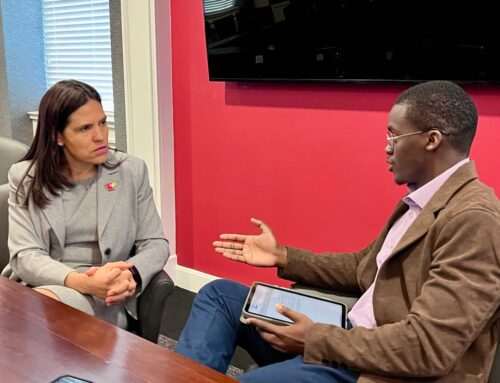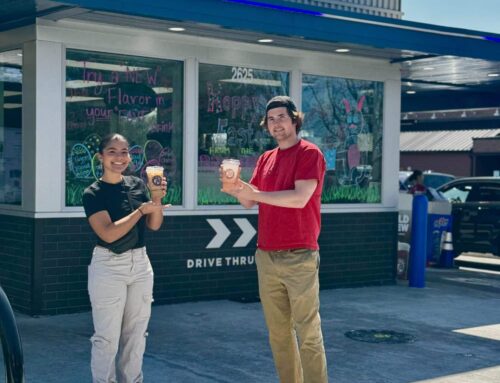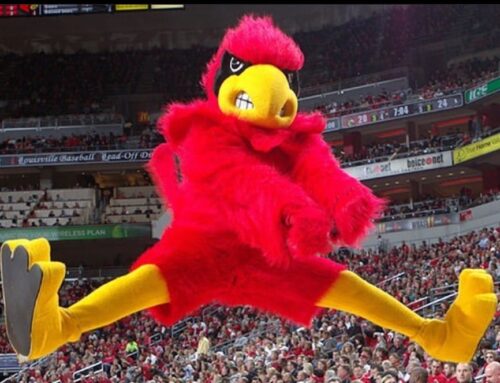By Laura Azahar–
A cornucopia of two cultures is served on a platter this Thanksgiving — the Latino community has adopted this holiday and made it their own.
Pilgrims at Plymouth Rock celebrated the first Thanksgiving in 1621. More than 390 years later, there is a new wave of pilgrims: Latinos, who gather to celebrate the bountiful opportunities the U.S. has to offer.
“We have come together every year to give thanks that we have come to this country and (for) the opportunities that we have in comparison to how our lives would have been if we had not moved to the U.S,” Carlos Baldeon, a junior accounting major from Peru said.
Moving to the United States gave Latinos holidays not celebrated in their countries of origin.
Alfredo Santana, a senior marketing major from Cuba said, “It’s a holiday and a time off from school so you know, it’s a great excuse to party.”
Not everyone celebrates the holidays solely within the family and friends. María Karen Lopez, graduate student from Mexico with a concentration in Spanish, said her family prepares a dinner for the employees at her family’s restaurant. They take advantage of the day’s closure to celebrate among family and employees as well.
Some Latino immigrants, like Jacob Larrinaga, know of the tradition of Thanksgiving. Larrinaga is a senior communications major who came to U of L from the campus in Panama, and has always celebrated Thanksgiving because it lands close to his mother’s birthday. His family celebrates with the traditional turkey but they add tamales as well. This year he will be celebrating it for the first time in the U.S. with his friend’s family, who are American.
“The most important thing you can get from my experiences is that the U.S. had a great deal of influence in Panama,” Larrinaga said, “So it’s an Americanized culture already.”
While some Latinos may not have had a culture shock when they arrived here, there were others who took time to adjust. When it came to celebrate Thanksgiving, those who had no knowledge of the holiday learned about it from going to school. Just like in kindergarten, immigrants are taught everything about the U.S. traditions from the beginning.
Most immigrants who come to the U.S. wanted to celebrate the holiday because they saw their American counterparts celebrating it. Claudia Lopez is one of them. She is a senior Spanish and Latin American studies major who moved to the U.S. 12 years ago, and said that at first her family did not celebrate the holiday. Due to the influence of her school, Lopez and her family slowly adopted the holiday. As more family arrived to the U.S., the more reason to get together and celebrate.
Latinos have not only adopted Thanksgiving, they have also altered the way to celebrate it. Many families will have the traditional turkey dinner with mashed potatoes, green beans, cranberries and gravy, but it does not stop there. They will add traditional dishes from their homelands — such as tamales, ceviche, congris, pork and different variations on a turkey — to spice things up.
Aside from altering the food, the way they spend time with each other as family and friends is quite different from the American household. For example, most Latinos do not watch American football, as is the case of Spanish professor Mònica Rodríguez. “We don’t watch football: we eat and dance instead,” Rodríguez said.
The presence of Latinos on U of L’s campus is evident, as it is in the Louisville Metro Area. As of the 2010 Common Data Set, U of L reported a total of 481 of Latino students. In Louisville, the U.S. Census reported that 32,542 Latinos live here. If the population trend is taken into account, those numbers have gone up since the surveys were taken.
As the Latino population grows all over the country, more mixtures of cultures are visible in the celebration of holidays. Quite possibly, Latinos may have a future holiday to honor their pilgrimage and achievements in the ‘Land of Opportunity’ one day.
[email protected]
Photo: Flickr/rvacapinta






